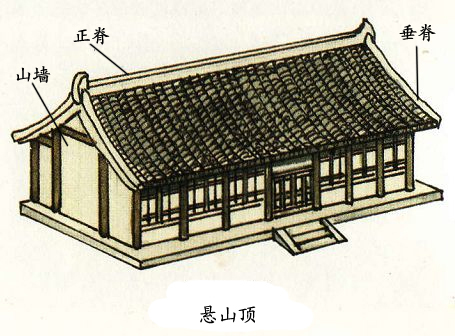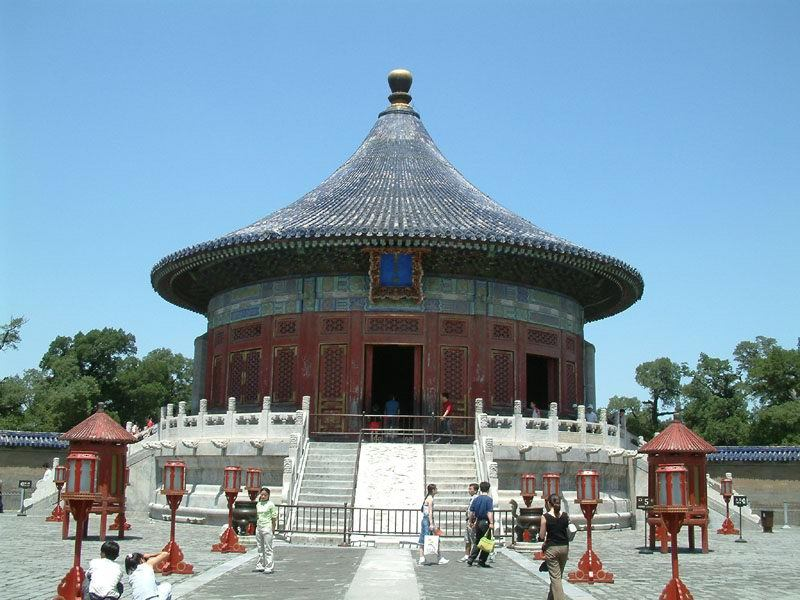Types of Roofs on traditional Chinese Architecture
When visiting Chinese traditional architecture, do you feel perplexed by the "almost-the-same" architecture? You have no idea what the difference is between all these buildings. Here I will introduce you several types of roofs which is the most direct part to know about the social status of its owner.
1. Hip/Hipped Roof (Wudian Roof)
See the 1st picture below
Hipped Roof is of the highest level in traditional Chinese architecture. Only the royal family and Confucius had the privilege to use such style of roof. Such roof has five ridges and four sides, all in the form of gentle slope.
2. Eastern Asia Hip and Gable Roof (Xieshan Roof)
See the 2nd picture below
The roof on the building in front of us is called Eastern Asia Hip and Gable Roof. Let's count how many hips it has. Okay, the horizontal one on the top, called main ridge; connecting the main ridge, there are four other ones, called vertical ridges and after a stop, there are four more, called diagonal ridge. To sum up, nine ridges in total. Therefore, such roof is also called "Nine-Ridge roof". In Chinese, the roof has a interesting name, literally meaning a mountain taking a break.
Such kind of roof is only next to hipped roof in terms of social position. Now let's look at the side of the roof. Does it look like a mountain? Yes, therefore, this side is called pediment/gable.
3.Suspended Roof (Xuanshan Roof)
See the 3rd picture below
The roof we can see now is called suspended roof. It's hard to tell where is it suspended from. Well, to understand the name, it requires a little bit imagination. Look at the side of the roof, it formed a triangle. Does it remind you of a small mountain? Yes. And the roof on top of it does not stop at the edge,instead, it stretches out and looks like it is suspended on the mountain.Therefore, it is called "suspended roof".
Speaking of the social ranking, such roof is not of high level. It is the most common type and could be used by ordinary people or used as side hall in palace and temple.
4."Hard mountain Roof" or "Ying Shan Roof".
See the 4th picture below
Since we have covered the "suspended roof", let's talk about it's sister "Hard mountain Roof" or "Ying Shan Roof". The major difference between the two sisters lies in whether the roof goes beyond the pediment. If it does, then it is the suspended roof, if it doesn't, then it is the "hard mountain" roof. Sometimes, the pediment can even goes beyond the roof. Such roof style is called“fire-sealing gable". And you can tell from the name that such style is helpful for preventing the fire from going wild. In fact, not only the "fire-sealing gable" but all "hard-mountain roofs" are helpful for limiting the fire. Why is it? Because unlike the other styles whose wooden structure are partly exposed, such style constructed the ends of the purlin into the pediment. Looking from outside, it reminded the ancient Chinese people of solid and hard mountain, thus came the name.
In contrast, the suspended roof is helpful for preventing the rain from wetting the room. Since the south part of China is raining, therefore, it is widely used in the south, while the hard-mountain roof is commonly used in the north.
5.Pavillion Roof
See the 5th picture below
Pavillion Roof is commonly used on pavilions, pagodas and so on. It looks like a big cone.




